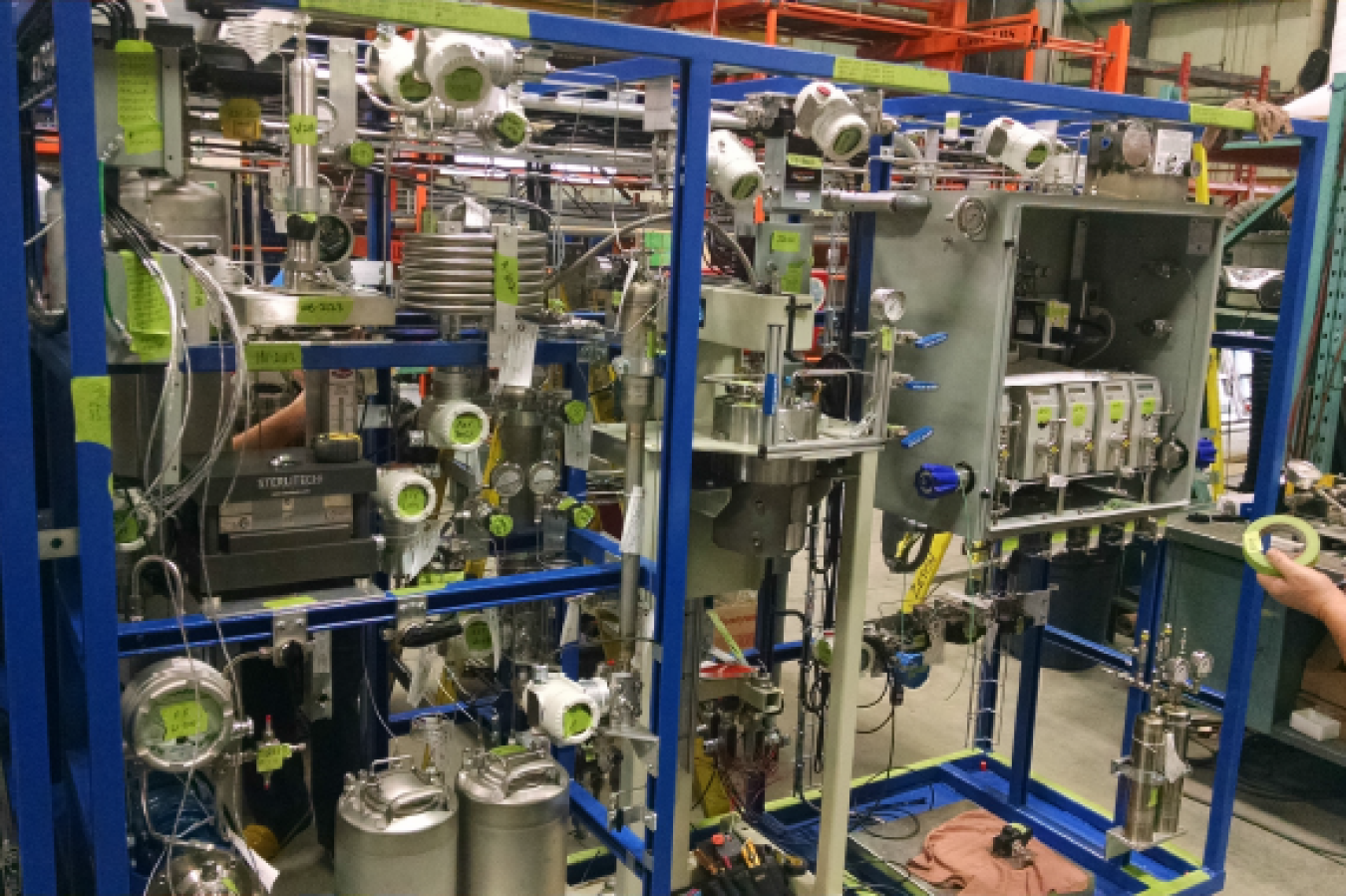
The main section of the Novomer system which includes a reactor, membrane separation, polymerizer, and controls needed to run the fully automated system which converts waste carbon dioxide into valuable chemicals.
For chemical manufacturers, waste usually equates to a loss – loss of time, money, opportunity, or all of the above. Carbon dioxide (CO2) is a byproduct of many manufacturing processes, and also contributes to greenhouse gas emissions. If manufacturers can find a way to convert waste CO2 into different valuable chemicals, they can save money and reduce harmful emissions into the environment.
Researchers at Praxair and Novomer are doing just that. The Department of Energy’s (DOE) Advanced Manufacturing Office (AMO) awarded Novomer and Praxair $5 million for applied research and development to build and validate a semi-integrated laboratory-scale process to convert CO2 to valuable chemicals. Praxair developed unique systems to convert CO2 to carbon monoxide (CO) using a solid oxide electrolyzer (SOE). Novomer uses the CO from Praxair’s process to convert ethylene oxide, a gas with diverse applications, to an intermediate chemical that can be converted to acrylic acid and succinic anhydride, which can be used in things like plastic and pharmaceuticals, respectively. The goal of this new research was to combine these two systems into a process that could provide the chemical industry with a low-energy, cost-effective method of producing important chemical intermediates. This research has applications for a broad range of industries including paint and coating, food, textiles, and polymers. Praxair and Novomer also received vocal industry support from companies interested in lower cost, greener methods of producing acrylic acid, including Evonik and Unilever.
One of the reasons this research has been so successful is that it utilizes Novomer’s unique homogeneous catalysts which have extremely high selectivity in using CO to convert ethylene oxide into the desired products by carbonylation under very mild conditions of temperature and pressure. Conventional carbonylation catalysts, however, require very high temperatures and difficult separation processes. This new method can be done under atmospheric conditions, increasing energy productivity by 30-70% depending on what the final product is. Another major benefit of this technology is that the price of chemicals produced using this technology is decoupled from crude oil, which also reduces oil imports. The fact that the raw material for this process was previously considered a waste product has a significant positive impact on the economics of producing acrylic acid, succinic anhydride, and their various intermediates.
To date, the project partners have demonstrated success in developing and operating a fully automated lab-scale unit and very recently a fully automated pilot plant unit as well.
In April of 2016, the project partners notified AMO that they would complete all remaining work on the SOE cell without Federal funding. Although AMO’s role in the project is complete, Novomer continues to engage in development activities for a commercial-scale plant, which is expected to be complete by the end of 2020. Praxair is focused on further scaling up the multi-cell SOE.
To learn more about this project, including the barriers and specific milestones, read our factsheet.
